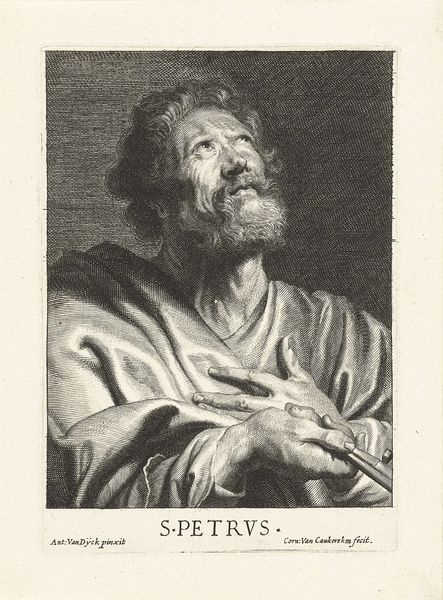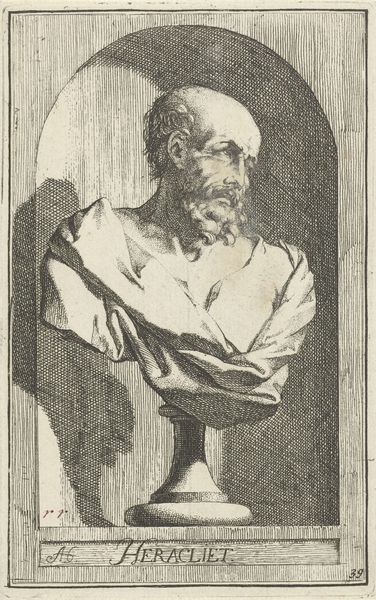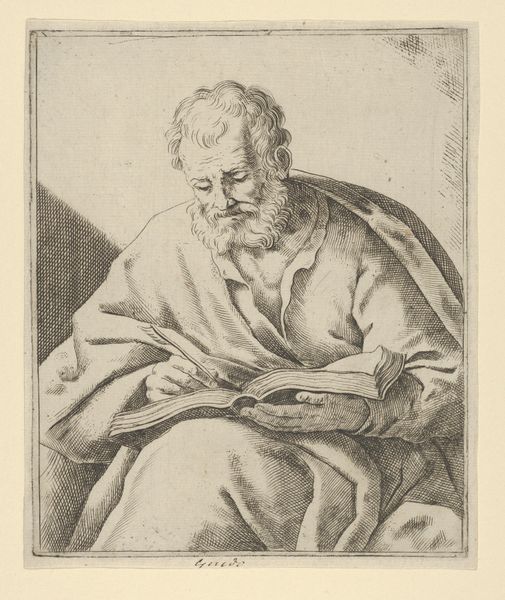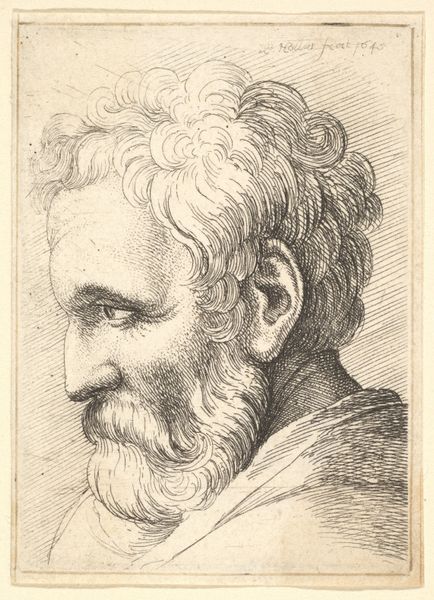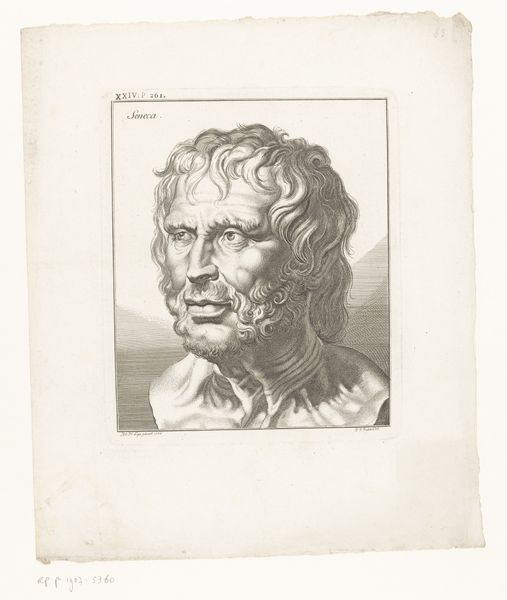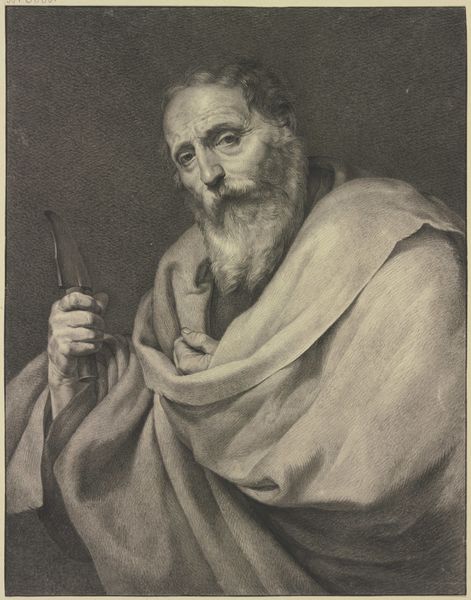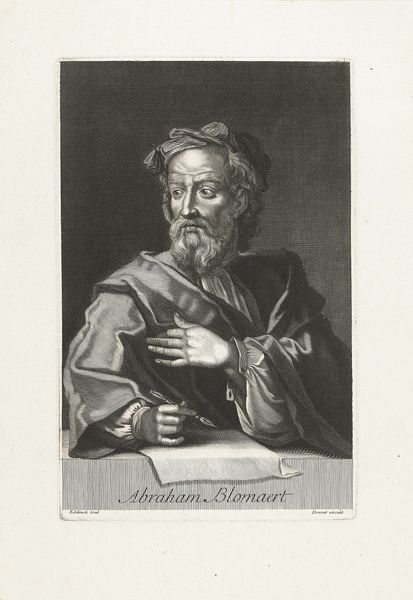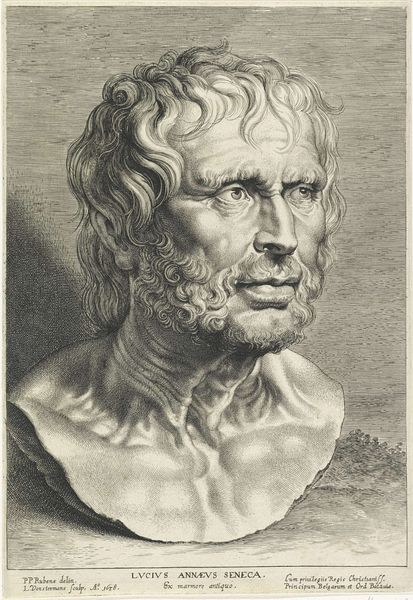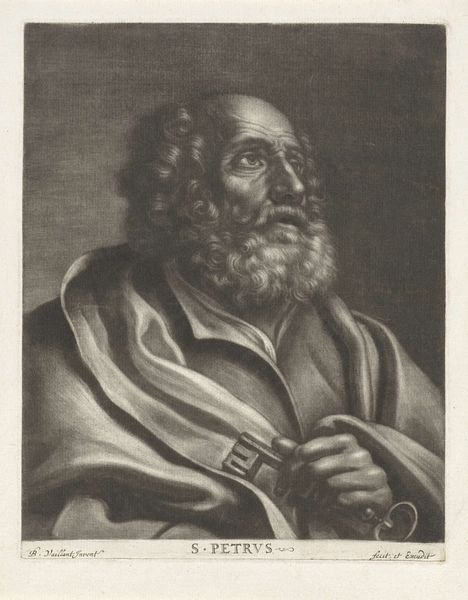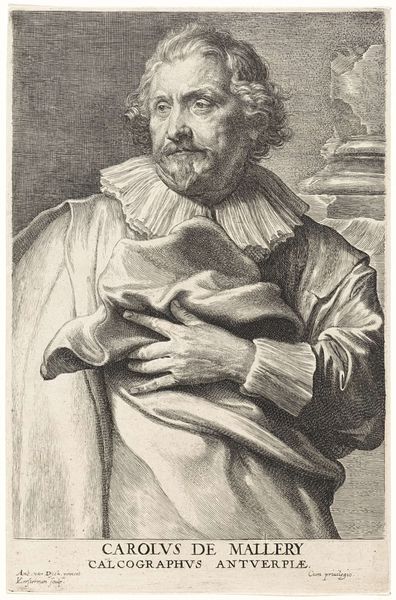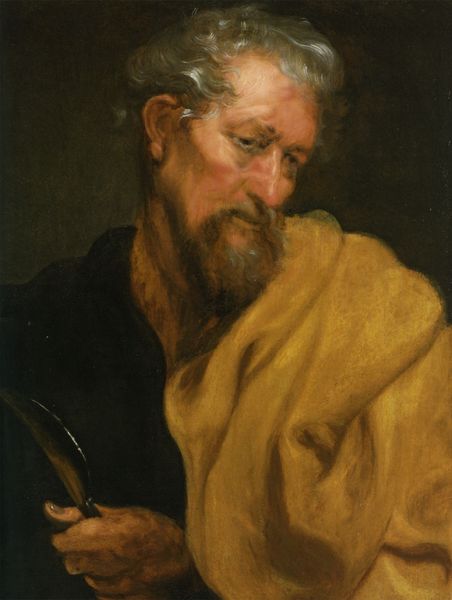
engraving
#
portrait
#
baroque
#
engraving
Dimensions: height 117 mm, width 170 mm
Copyright: Rijks Museum: Open Domain
Curator: Looking at this engraving, "Bartolomeüs" by Cornelis van Caukercken, created sometime between 1640 and 1680 and residing at the Rijksmuseum, the first thing I see is a face heavy with... resignation? What’s your initial reaction to this striking Baroque portrait? Editor: The melancholy is palpable. It’s in the downward cast of his eyes, the set of his mouth, even the way he clutches the cloth. And the feather, prominently displayed. The overall impact creates a somber and rather dignified figure. What elements contributed to the mood of martyrdom here? Curator: This piece reflects the socio-political environment and religious upheavals of 17th-century Europe. Saint Bartholomew, as legend dictates, was skinned alive. Caukercken depicts him not in agony, but contemplating that sacrifice, the draped fabric alluding, of course, to his martyrdom. This depiction invites discussions of victimhood, of suffering under religious authority. Editor: Absolutely. And note the specific symbols—the fabric, reminiscent of his flayed skin. And the quill, signifying his role as a writer, one of the ways in which religious ideas circulated and took hold. Curator: The intersection of those two signifiers—martyrdom and knowledge production—powerfully underlines Bartholomew’s importance within the historical narrative of the church. Editor: And beyond that, what power this image may have wielded—or still might wield—as the viewer contemplates their own mortality, morality, and purpose! These potent visual codes resonate across centuries. Curator: Considering its creation within a specific power structure, the artwork poses crucial questions regarding faith, resistance, and the representation of identity and suffering. Looking at his expression I am made aware how loaded the visual depictions of suffering and belief are. Editor: Exactly. It compels a reevaluation of historical narratives. Thank you for allowing me to analyze these potent, loaded symbols through a modern lens. Curator: Likewise, your insightful observations shed a light on the work’s intricate layering of symbols and enduring power.
Comments
No comments
Be the first to comment and join the conversation on the ultimate creative platform.
